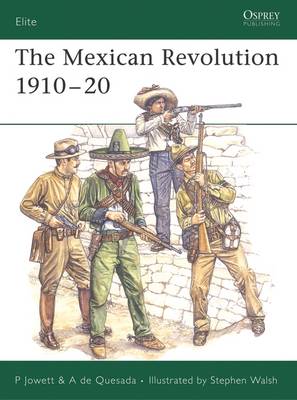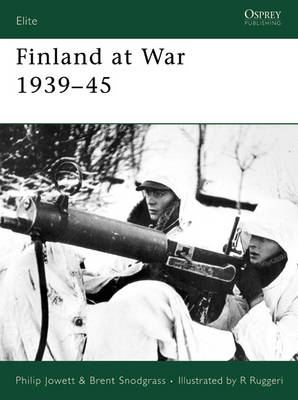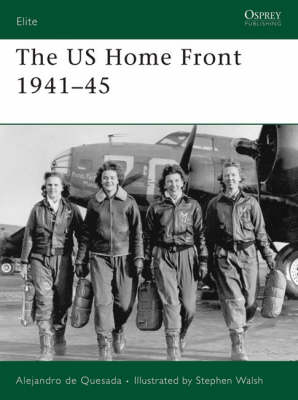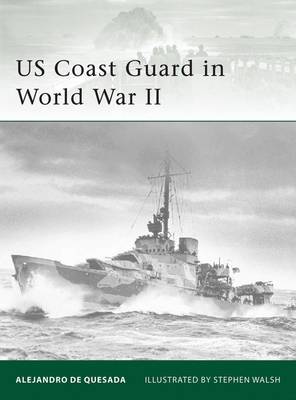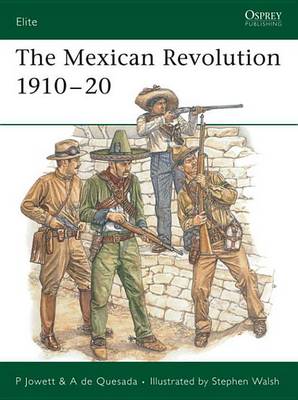Elite
5 primary works • 6 total works
Book 137
The Mexican Revolution 1910-20
by Philip S. Jowett and Alejandro De Quesada
Published 8 February 2006
The image of this long civil war is well known from its frequent use as the historical context for films, yet the military facts have rarely been published in English. This book offers the real first history of the Mexican Revolution. Apart from the guerrilla operations, for which the Revolution is best-known, it also covers several major battles that involved up to 20,000 men on each side, barbed wire, trenches and machine guns. This legendary conflict brought together traditional 'bandido' figures and the first generation of Western military technology. Peasant men, women revolutionaries, impeccably uniformed Federales, mercenary pilots and US expeditionary troops are all brought to life in a colourfully illustrated text.
Book 141
In the face of Soviet invasion in 1939-40, and once again in 1941-44, the armies raised by Finland - a tiny nation of only 4 million people - astonished the world by their effective resistance. At the end of both these campaigns - the Winter War, and the Continuation War - the fiercely patriotic defiance of vastly stronger Soviet forces by Marshal Mannerheim's soldiers won their country a unique prize: although forced to accept harsh terms, Finland was never occupied by the Red Army, and retained its independence. This book explains and illustrates, for the first time in English, the organization, uniforms, equipment and tactics of Finland's defenders.
Book 161
The outbreak of World War II in Europe in 1939 led to cautious attempts to raise volunteer organisations among American men and women, to back the armed forces in the event of the USA becoming directly involved in the conflict. The attack on Pearl Harbor caused a huge surge of patriotic response, and voluntary enlistment in a wide range of armed forces auxiliary and civilian support services swelled vastly. Looking firstly at the background and general character of wartime life in the States, this book covers a number of these services, providing an interesting comparison with the conditions on the British Home Front and the experiences of other countries caught up in the war, examining organisations from the Red Cross to the Coast Guard and for the first time, containing full-colour reconstructions of over a dozen uniformed services.
Book 166
Osprey's examination of the events in the Bay of Pigs (1961) that led to the Cuban Missile Crisis (1962). In early 1961 President John F. Kennedy gave the go-ahead to an existing plan for Cuban exiles to return to overthrow Fidel Castro's communist regime. While the CIA helped in the planning stages, the attempt would not be assisted by any US armed forces. On the night of April 16, 1961, a force of 1,400 exiles, known as 2506 Brigade, landed at the Bay of Pigs on the south coast of Cuba, supported by a few World War II vintage aircraft flying from Nicaragua. While they succeeded in knocking out some of Castro's small air force on the ground, the remaining Cuban aircraft sank two of the exiles' support ships, and the beachhead became isolated. Fighting continued for three days before Castro's army overwhelmed the landing force. Most of the exiles were captured and suffered a harsh imprisonment before the US negotiated their release. This episode, followed by the installation of Soviet missiles in Cuba, led directly to the Cuban Missile Crisis of October 1962, and continues to affect US/Cuban diplomatic relations to this day. This book, written by the nephew of a surviving 2506 Brigade veteran, includes detailed color plates, unpublished photographs, and interviews with veterans.
Book 180
Alex de Quesada reveals the full history of the US Coast Guard throughout World War II in this Elite title. In particular, the book draws attention to the little-known story of how the US Coast Guard ran a number of the landing craft throughout D-Day in 1944 as well as providing crucial anti-U-boat patrols throughout the war years. A number of Coast Guard servicemen were lost in these two campaigns, and their undeniable contribution to the US war effort deserves greater recognition. The Coast Guard also provided aviators and gunners to the Merchant Marine and manned Port Security Services. These roles are all fully explained and illustrated with rare photographs and specially commissioned artwork.
The Mexican Revolution 1910-20
by Philip S. Jowett and Alejandro De Quesada
Published 20 October 2013
